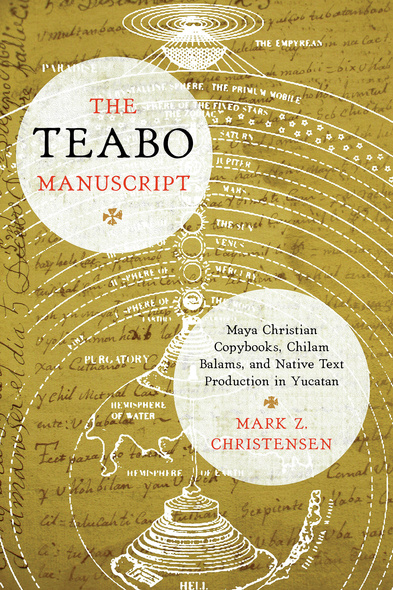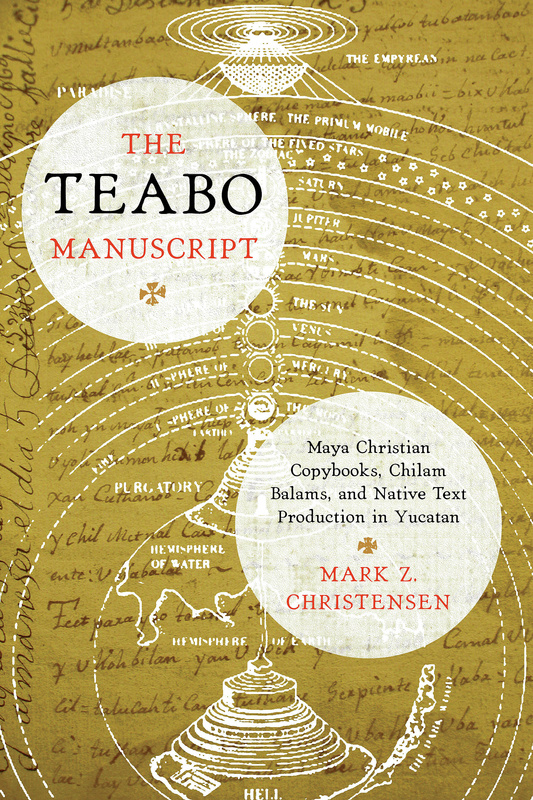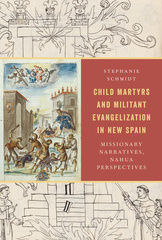The Teabo Manuscript
Maya Christian Copybooks, Chilam Balams, and Native Text Production in Yucatán
Winner, LASA Mexico Humanities Book Prize, 2017
Among the surviving documents from the colonial period in Mexico are rare Maya-authored manuscript compilations of Christian texts, translated and adapted into the Maya language and worldview, which were used to evangelize the local population. The Morely Manuscript is well known to scholars, and now The Teabo Manuscript introduces an additional example of what Mark Z. Christensen terms a Maya Christian copybook. Recently discovered in the archives of Brigham Young University, the Teabo Manuscript represents a Yucatecan Maya recounting of various aspects of Christian doctrine, including the creation of the world, the Fall of Adam and Eve, and the genealogy of Christ.
The Teabo Manuscript presents the first English translation and analysis of this late colonial Maya-language document, a facsimile and transcription of which are also included in the book. Working through the manuscript section by section, Christensen makes a strong case for its native authorship, as well as its connections with other European and Maya religious texts, including the Morely Manuscript and the Books of Chilam Balam. He uses the Teabo Manuscript as a platform to explore various topics, such as the evangelization of the Maya, their literary compositions, and the aspects of Christianity that they deemed important enough to write about and preserve. This pioneering research offers important new insights into how the Maya negotiated their precontact intellectual traditions within a Spanish and Catholic colonial world.
From the structure of the book to the analytical execution, Christensen has done an excellent job of allowing the Teabo Manuscript to speak for itself and tell the story recorded within it.
Christensen's translation as well as his black and white images of the entire manuscript will be invaluable to scholars working on Maya documents. Future authors should take note of Christensen's diligent efforts to bring this manuscript to light.
[An] illuminating selection of Maya Christian writings that are authoritatively introduced and contextualized by Christensen.
Christensen's book is an important contribution to the discussions and debates regarding indigenous participation in the creation of Maya theologies. Historians, anthropologists, scholars of religious studies, and their students will find this book useful.
Maya Christian texts are…relatively rare, making the Teabo Manuscript an invaluable window into the minds of converted Maya Christians during the colonial period…In his extensive introductory notes and commentary, Christensen persuasively documents numerous instances in which the Maya authors inserted uniquely Maya concepts, storylines, events, and even dialogue into the original texts.
This book will become one of the standard works in the study of late colonial ecclesiastical texts in Maya languages. It successfully challenges some of the field’s most basic concepts concerning the nature of Catholic conversion and the indigenous reception/rejection/adaptation of Catholicism. It is an excellent source that will serve as a case study of how to examine the multifaceted and often tricky concepts of the Catholic religion in translation and its indigenous reception in colonial societies that adopted an acculturated version of Catholicism that fit well with pre-Conquest indigenous concepts of the otherworldly and the divine.
Mark Z. Christensen is an associate professor of history at Assumption College. He is the author of Nahua and Maya Catholicisms: Texts and Religion in Colonial Central Mexico and Yucatan and Translated Christianities: Nahuatl and Maya Religious Texts.
- Maps and Figures
- Tables
- Acknowledgments
- Conventions of Transcription and Translation
- Introduction. Colonial Texts and Maya Christian Copybooks
- 1. Creating the Creation
- 2. Genealogies, Parables, and the Final Judgment
- 3. Doomsday and the Maya
- 4. Mary, Christ, and the Pope
- 5. Records of Death and Healing
- Conclusion
- Appendix
- Notes
- Bibliography
- Index






